 Species and natural selection are foundational concepts in understanding Darwin’s theory of evolution. These two concepts form the title of Charles Darwin’s legionary publication –
Species and natural selection are foundational concepts in understanding Darwin’s theory of evolution. These two concepts form the title of Charles Darwin’s legionary publication –
“On the origin of species by means of natural selection, or the preservation of favoured races in the struggle for life.”
Swedish botanist Carolus Linnaeus (pictured below) popularized the term “species,” and Darwin popularized the term “natural selection.” Exploring these two core concepts is essential to understanding the theory of evolution.
Species Concept
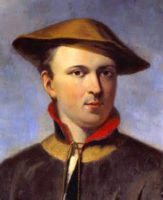 The concept of species is a fundamental unit of biological classification for differentiating between life forms in Earth’s vast biosphere. Species is a Latin term meaning “a particular sort, kind, or type.” The term originates from the Indo-European root *spek, meaning “to observe,” the language of Japheth, one of Noah‘s three sons.
The concept of species is a fundamental unit of biological classification for differentiating between life forms in Earth’s vast biosphere. Species is a Latin term meaning “a particular sort, kind, or type.” The term originates from the Indo-European root *spek, meaning “to observe,” the language of Japheth, one of Noah‘s three sons.
In Species Plantarum (1753), Carolus Linnaeus introduced his innovative two-name species system (binomial name) – based on observable biological similarities. The species’ first name is the Kind (Genus), followed by a distinguishing second name. Linnaeus perceived a Divine order in nature –
“The study of nature would reveal the Divine order of God’s creation, and it was the naturalist’s task to construct a ‘natural Classification’ that would reveal this order in the universe.”
While a noble cause, the concept of a “Divine order” in Earth’s biosphere does not appear in Genesis or any biblical account. Linnaeus reasoned that order must be characteristic of biology since order is a characteristic of the universe—a philosophical reason.
Species Definition
Defining terms is vital to communicating concepts in science. Even though Linnaeus popularized the “species” term, he never developed a definition of “species,” and neither did Darwin, noting –
“No one definition has satisfied all naturalists; yet every naturalist knows vaguely what he means when he speaks of a species.”
Ernst Mayr
Not until the mid-twentieth century did German evolution biologist Ernst Mayr (pictured right) propose a modern definition of species. Mayr defined species as “a group of reproductively isolated organisms.” The definition gained widespread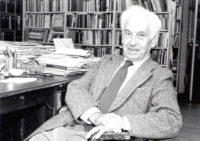 recognition, becoming known as the “biological species concept (BSC).”
recognition, becoming known as the “biological species concept (BSC).”
However, by the late twentieth century, the limits of Mayr’s definition emerged. Viruses reproduce in isolation, not groups, and the single-celled microorganisms in the Archaea domain reproduce asexually. As science writer Mindy Weisberger in the CNN article “What defines a species?” (2023) notes –
“Biologists have wrestled with the concept [species] for about as long as the field of biology has existed.”
International Code for Zoological Nomenclature
Studying evolution without a scientifically valid definition of species remains an outstanding issue for unifying biology scientifically. Today’s official naming organization, the International Code for Zoological Nomenclature (ICZN), defines species only as distinct life forms –
“The rank next below the genus group; the basic rank of zoological classification.”
Unlike Mayr’s definition, ICZN’s species definition is not based on biological characteristics. A universal biological distinguishing measurable characteristic linking Earth’s vast biosphere has yet to be identified.
Naturalists should define all technical terms. However, modern biology still does not practice defining a species based on measurable characteristics.
Natural Selection Concept
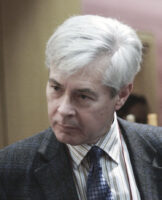 The Scientific Revolution began to slowly discover many of nature’s secrets. However, addressing the question, “Where does life come from?” remains a mystery beyond reach. The question captivated Darwin. Science historian Peter J. Bowler (pictured left) explains –
The Scientific Revolution began to slowly discover many of nature’s secrets. However, addressing the question, “Where does life come from?” remains a mystery beyond reach. The question captivated Darwin. Science historian Peter J. Bowler (pictured left) explains –
“Through a combination of bold theorizing and comprehensive evaluation, Darwin came up with a concept of evolution that was unique for the time.”
By the mid-nineteenth century, Darwin noted that interest in the mystery of life was “In the air.” Darwin’s “economy of nature” concept emerged from the influence of Enlightenment philosophy.
Darwin’s “economy of nature” concept emerged from Enlightenment philosophy, as in economics, so in nature. By popularizing a connection between economics and natural adaptations, Karl Marx legitimized social progress through progressive actions.
As economies adjust to survive and advance, so adaptations adjust nature to survive and advance. With this logic, Darwin reasoned that with the continuous selection of adaptations, new species would eventually account for Earth’s vast life-forms, noting –
“New species over time are formed through natural selection.”
This once-popular 1861 satirical song highlights the essence of Darwin’s theory –
“A deer with a neck that was longer by half than the rest of his family’s (try not to laugh),
By stretching and stretching became a Giraffe
Which nobody can deny.”
Thomas Robert Malthus
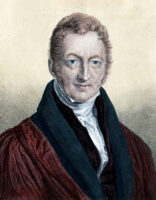 Political economist Thomas Robert Malthus (pictured right) introduced Darwin to an economic theory of survival that could provide clues to discovering nature’s “Where does life come from” mystery.
Political economist Thomas Robert Malthus (pictured right) introduced Darwin to an economic theory of survival that could provide clues to discovering nature’s “Where does life come from” mystery.
In his 1798 publication, Malthus calculated that human population growth would far exceed Earth’s food production capacity by the end of the nineteenth century, leading to an inevitable “struggle for existence.”
By applying Malthus’ economic struggle concept biologically, Darwin envisioned nature struggling to preserve species with favorable variations while eliminating those with unfavorable ones. The theory emerged as the cornerstone of modern evolutionary biology. Darwin rephrased “struggle for existence” for the subtitle of The Origin of Species to –
“The preservation of favoured races in the struggle for life.“
By extending the blended logic further, Darwin envisioned Earth’s species as an interconnected biosphere, developing through the emergence of “innumerable” transitional species linked to a common ancestor –
“I can see no limit to this power [natural selection], in slowly and beautifully adapting each form to the most complex relations of life.”
Darwin’s natural selection concept drew near-immediate fame and fury – philosophically and scientifically.
Natural Selection Definition
 While writing volumes of arguments to explain the role of natural selection, Darwin (pictured left), like the term species, never defined the phrase. This practice was common and popular amongst progressive naturalists during the Enlightenment movement and even encouraged.
While writing volumes of arguments to explain the role of natural selection, Darwin (pictured left), like the term species, never defined the phrase. This practice was common and popular amongst progressive naturalists during the Enlightenment movement and even encouraged.
Definitions were deemed unnecessary since definitions should be governed by reason and observation. The Origin of Species did not contain a glossary of terms until the sixth edition in 1872, as footnoted –
*I am indebted to the kindness of Mr. W. S. Dallas for this Glossary, which has been given because several readers have complained to me that some of the terms used were unintelligible to them. Mr. Dallas has endeavored to explain the terms in as popular a form as possible.”
However, British zoologist William Sweetwater Dallas did not include “natural selection” in his Glossary, either. By the twentieth century, defining scientific terms was reestablished to avoid misunderstandings. Merriam-Webster defines natural selection as –
“A natural process that results in the survival and reproductive success of individuals or groups best adjusted to their environment and that leads to the perpetuation of genetic qualities best suited to that particular environment.”
Natural selection is a critical adaptive process but not a speciation process. WIKIPEDIA, using “evolution” vaguely, notes –
“Natural selection is the differential survival and reproduction of individuals due to differences in phenotype. It is a key mechanism of evolution.”
However, testing, not defining terms, is science’s critical core process.
Testing Natural Selection
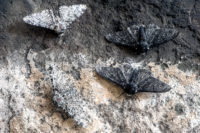 Five principal factors drive natural selection: 1) variation, 2) inheritance, 3) selection, 4) time, and 5) adaptation., each scientifically testable. British geneticist Bernard Kettlewell is credited as one of the first to test “natural selection” by studying peppered moths (pictured right). Kettlewell tested Darwin’s explanation of natural selection –
Five principal factors drive natural selection: 1) variation, 2) inheritance, 3) selection, 4) time, and 5) adaptation., each scientifically testable. British geneticist Bernard Kettlewell is credited as one of the first to test “natural selection” by studying peppered moths (pictured right). Kettlewell tested Darwin’s explanation of natural selection –
“For natural selection acts by either now adapting the varying parts of each being to its organic and inorganic conditions of life; or by having adapted them during past periods of time.”
However, Kettlewell only tested one factor of natural selection five factors – namely adaptation (microevolution). While each factor is testable individually, Lenski’s E coli study is evolution’s only test of natural selection’s five factors simultaneously. According to Darwin –
“The theory of natural selection is grounded on the belief that each new variety, and ultimately each new species (macroevolution), is produced.”
Lenski’s ongoing study is the most extended test of evolution ever undertaken; its significance is unparalleled in the history of evolution studies. However, after the equivalent of more than one million years of human evolution experimentation without observing the emergence of any new species, macroevolution remains a scientifically invalid theory.
Macroevolution
 Microevolution is a valid adaptive process within species but alone does not account for the origin of new species. However, by extending these adaptive processes, Darwin, writing from his library (pictured left), envisioned natural selection also accounting for the emergence of “all living species,” noting –
Microevolution is a valid adaptive process within species but alone does not account for the origin of new species. However, by extending these adaptive processes, Darwin, writing from his library (pictured left), envisioned natural selection also accounting for the emergence of “all living species,” noting –
“By the theory of natural selection, all living species have been connected with the parent-species of each genus… So that the number of intermediate and transitional links, between all living and extinct species, must have been inconceivably great. But assuredly, if this theory be true, such have lived upon the Earth.”
Darwin’s version of natural selection for the emergence of “all living species” includes common ancestry and vast numbers of transitional links.
The last sentence is Darwin’s falsification test: “But assuredly, if this theory be true, such have lived upon the Earth.” Since then, evolution scientists have searched for these validating shreds of evidence.
However, the evidence must still support common ancestry and transitional link concepts. Therefore, Darwin’s extension of microevolution to macroevolution has yet to be scientifically invalided, as further demonstrated by Lenski’s E. coli long-term experimental study.
Studying Evolution and What Is Science? are subcategories of Understanding Evolution.
Darwin Then and Now is an educational resource on the intersection of evolution and science, highlighting the ongoing challenges to the theory of evolution.
Move On
Explore how to understand twenty-first-century concepts of evolution further using the following links –
-
- The Understanding Evolution category showcases how varying historical study approaches to evolution have led to varying conclusions. Subcategories include –
- Studying Evolution (current page) explains how key evolution terms and concepts have changed since the 1958 publication of The Origin of Species.
- What is Science explains Charles Darwin’s approach to science and how modern science approaches can be applied for different investigative purposes.
- Evolution and Science feature study articles on how scientific evidence influences the current understanding of evolution.
- Theory and Consensus feature articles on the historical timelines of the theory and Natural Selection.
- The Biography of Charles Darwin category showcases relevant aspects of his life.
- The Glossary defines terms used in studying the theory of biological evolution.
- The Understanding Evolution category showcases how varying historical study approaches to evolution have led to varying conclusions. Subcategories include –


